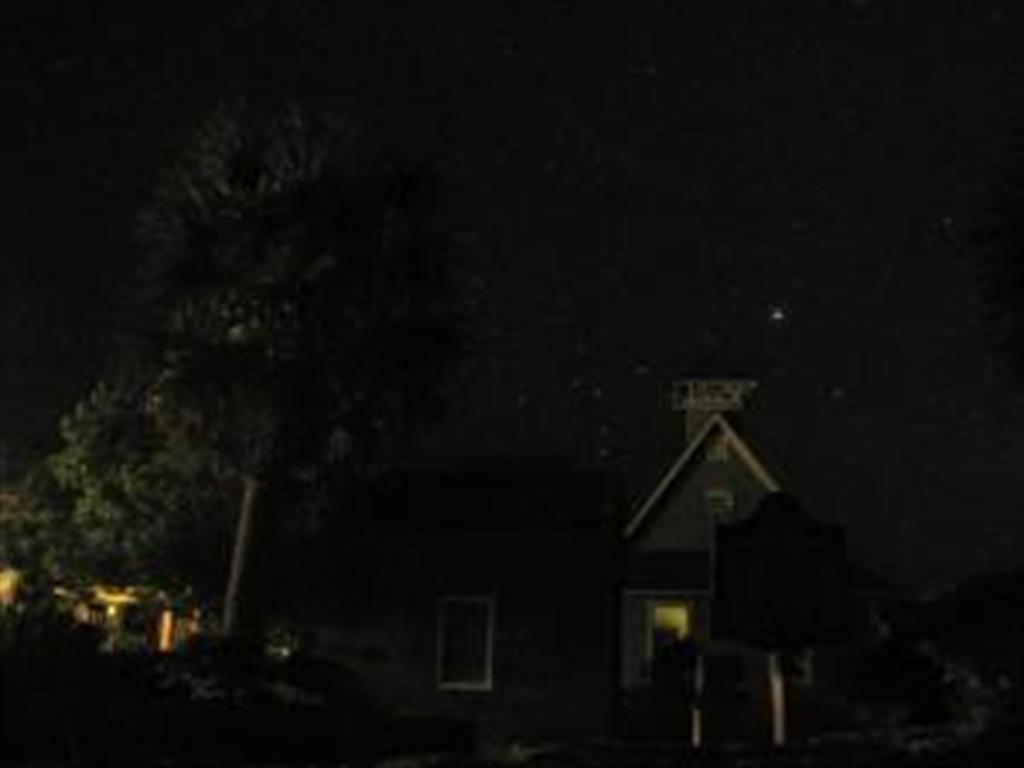Super Stars with the Bald Head Island Conservancy

Most of my adventures put me on Bald Head Island during the day, but on my most recent adventure things didn’t even start to get interesting until 8:30 p.m. The sun was setting and the first stars were showing themselves when my wife and I met Andy at the Fleming Environmental Center at the Bald Head Island Conservancy to take part in their new Stargazing program.
I’ve always wanted to know more about astronomy, but I’ve never taken the time to learn all the constellations and major stars. Sure, I can find the Big and Little Dippers, and Orion, but beyond that I’m pretty much lost. This was going to be a learning experience for me.
As we stood outside Turtle Central waiting for the sky to darken enough for proper stargazing, we were joined by two more adventurers – Clay and his seven-year-old son Blake, on the island as part of the Wounded Warriors Project. Andy gave out binoculars and star charts (called planispheres) and we headed to the beach in front of Captain Charlie’s.
On the beach, Andy showed us how to use the star charts and we oriented ourselves and began to point out constellations and asterisms. Asterisms are identified groupings of stars that don’t necessarily form a constellation. The Big Dipper and Little Dipper are probably the most well known asterisms. The Big Dipper makes up the hindquarter of the bear in the constellation Ursa Major, while the Little Dipper is part of Ursa Minor.
To me, these asterisms are a little easier to picture—it takes quite a bit of imagination to picture the bears in Ursa Major and Minor, the crab in Cancer or the twins in Gemini. Orion is a bit more obvious, but as Andy told us the story of each constellation they started to come to life.
For the more difficult constellations like Draco (the dragon), Hercules, and Bootes (the herder or bear driver, pronounced “booties”) Andy had a super-powerful laser pointer that let him trace their outlines as he told us about them. Ancient Greeks and Romans pictured Bootes as a bearded man who was a shepherd, but now he’s known as the bear driver because he follows the constellations Ursa Major and Ursa Minor.
There were a few constellations we couldn’t see because of the glow on the horizon from Southport, Wilmington and Carolina Beach. Andy told us that light pollution is a problem in most places, even a relatively dark-at-night spot like Bald Head Island.
Fortunately, light pollution can be an easy fix. With hoods to shield and direct street lights and lights in parking lots down rather than up, we can eliminate quite a bit of light pollution. Other solutions, like turning off unneeded exterior (or interior) lights, have further reaching environmental impacts by reducing both the cost and energy output required to operate lights.
For Bald Head Island, light pollution can present an unusual problem. Once nesting loggerhead sea turtles have laid their eggs, they navigate back to the sea by looking for the glow of the moon and stars as well as the sound and vibration of the surf. Newly hatched turtles also navigate to the sea using the glow of the moon and stars. If bright lights on houses or distant towns catch the eye of these turtles, they can wander away from the ocean and into the dunes. Thanks to a village ordinance banning artificial exterior lighting on beachfront homes on the island, this threat has been greatly diminished.
Stargazing with the Bald Head Island Conservancy is ongoing throughout the summer, check their online calendar or call them at 910-457-0089 ext. 13 or 16 for times and reservations. The cost is $15 or $20 per person, depending on your level of Conservancy membership.
If you’d like a preview of the night sky over Bald Head Island or your home, go to skymaps.com to print a copy of a map of the sky with notable constellations, stars and planets highlighted for you. Another great resource is skyandtelescope.com which includes an interactive sky map, amateur astronomer’s photos, an astronomy podcast and more. Kidsastronomy.com offers great learning and teaching tools for beginners. For stunning images of deep space and distant galaxies, head over to hubblesite.org, home of the Hubble Telescope. And one last thing. Download Google Sky Map, a smartphone app that identifies constellations, planets and asterisms overhead. It’s available on Android only. For an iPhone or iPad app, try Star Walk.
Published on Monday, May 2, 2011